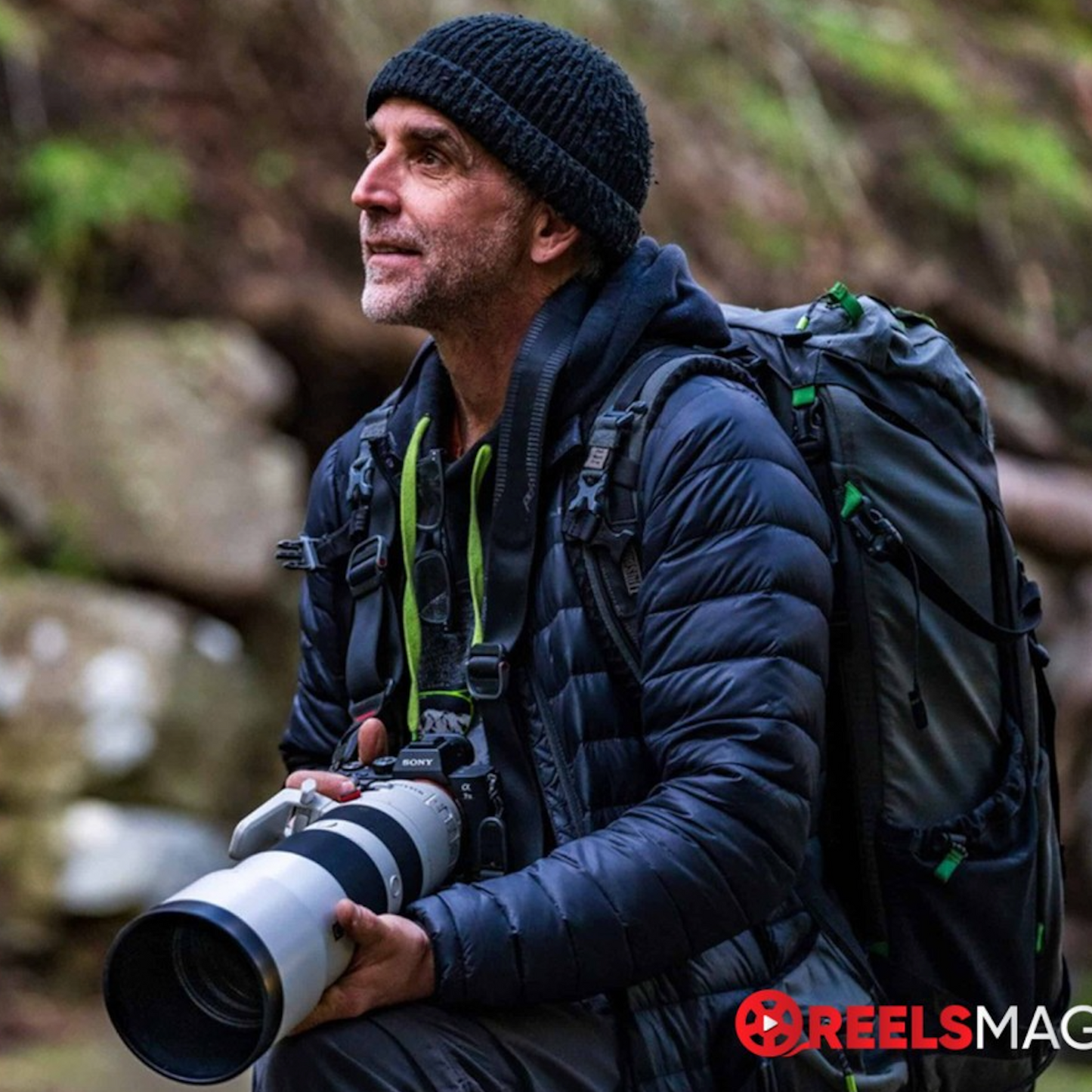
The photographers, journalists, filmmakers, and all-around incredible humans in the Think Tank community never cease to amaze and inspire us. Thanks to our good friend, Dan Carr, we were recently introduced to Pete Walsh, AKA The Platypus Guardian.
Pete lives in Hobart in Tasmania, and is the subject of a new documentary about his work photographing the platypus population that live in the city's waterways. The Platypus Guardian is the premiere film on this season of Nature on PBS here in the U.S. and airs on Wednesday, October 18 at 8/7c on all local PBS stations and streaming on pbs.org/nature, YouTube and the PBS App.

We caught up with Pete to ask him about his work helping protect the platypus population in Hobart, how he got his start in photography, and about what inspires him. And you know we had to ask him about the BackLight Elite backpack that he wears throughout the film!


Tell us a bit about who you are and where you live.
Pete: I live in Hobart, Tasmania in the foothills of kunanyi. It's a beautiful spot but is facing the same challenges as elsewhere in the world. When I'm not working in a bike shop, you'll find me down the waterway somewhere.

When did you first discover photography and was there any one photo, photographer, or moment that first inspired you?
Pete: Growing up I always loved slide nights. Projected images on a big screen - it always felt like such a celebration of our family's history, even if we'd seen the same reels of slides many times over. Most were taken by my father. Looking through the same slides today, he had a great knack for photography. I'd have to point the finger of inspiration at him. I began 'borrowing' my mum's 126 Instamatic camera. It went from there!

When did you first learn there was a population of platypuses living all around you there in Hobart?
Pete: Hobartians have long told stories of the rarely seen, mythical Hobart Rivulet platypus (singular). It was early in COVID that I began to spend more time down along the waterways, initially with one platypus and gradually more. It's one of the many tricky things about platypuses - there's just no easy way to count how many there are.


What has the reaction been like, both at home and abroad, as your efforts have gotten greater exposure since the release of the documentary?
Pete: I don't think anyone who worked on The Platypus Guardian expected people to connect with it in such a way. It's been really touching, and surreal at the same time.
What do you hope viewers will come away from watching the film with?
Pete: I hope they consider the balance of enjoyment vs caring in their own lives and make time to give something back to the natural world.


Have you been able to keep tabs on Zoom since the film wrapped? How is the platypus population in Hobart doing now?
Pete: I haven't seen Zoom for some time, but that is not unusual in the platypus world. The situation for platypuses living in the Hobart Rivulet hasn't changed much as yet. The community and local government are definitely more engaged which is great, but it remains a tough life for our urban platypuses. We really need to step up our efforts to restore Hobart's waterways.

What’s next for you? What kinds of projects are you working on now?
Pete: I'm currently working on a short form documentary called Becoming Platypus. It follows the lives of two platypus puggles. I hope to have it finished by mid 2024, after which it's primary use will be in platypus education programs.

Tell us about the gear you shoot with.
Pete: I generally carry the least amount of camera gear possible. That way it's easier to be always ready, and to move around the waterway without having excess gear get in the way. When you're out in waterway for hours, there's also extras like warm clothing, food etc. Add in heavy neoprene waders and you're pretty well at capacity!
My core kit for platypus photography and video is the Canon EOS R3 70-200mm 2.8 combo. For extreme low light scenarios, I'll use the 135mm 1.8. There's usually also a 50mm and wide-angle lens in the bag, spare batteries and memory cards.
Out in the waterway I rely heavily on preset custom modes for both photography and video. They allow me to be in the moment and focus on what matters. Platypus are quite small, dark in color, fast moving, generally coated in water in forest gullies that are generally really quite cold and dark. It's challenging but great fun, no really!

It was great to see you using the BackLight Elite throughout the film! How has the Elite held up over time in all the different locations you’ve taken it?
Pete: The Elite has taken a beating and then some! It's been through two years of heavy-duty use - rain, mud, caught up blackberry vines, not to mention being partly submerged in Hobart's waterways over and over again. It's never missed a beat. It's super comfortable to wear for extended periods, and my gear has always come through unscathed. The BackLight Elite is easily the best camera backpack I've owned over the years.

You can follow Pete and his platypus friends on Instagram and Facebook.
And be sure to watch the Nature premiere of The Platypus Guardian this Wednesday, October 18 at 8/7c on all local PBS stations and streaming on pbs.org/nature, YouTube and the PBS App.

-
Judith Guptill on February 9, 2024
-
Chris Gallo on February 9, 2024
-
Bill B on February 9, 2024
aria-label="Pagination Navigation" role="navigation"I thoroughly enjoyed this program as I do all the pbs programs I have watched. Pete Walsh is definitely an inspiration to us to not just enjoy nature but to help nature.
The program was an eye-opener on the life ofa platypus. I was surprised by the use of the tail and how it curls up to carry grass and twigs to the burrow. Amazing. Chris gallo
Excellent story, so glad to see how poeple are making a difference in their local community that benefits the world in a greater way than they can imagine.